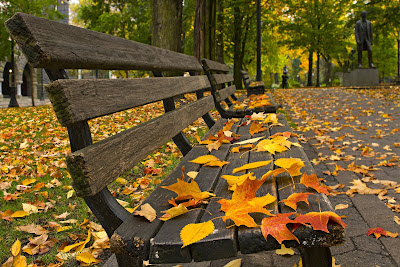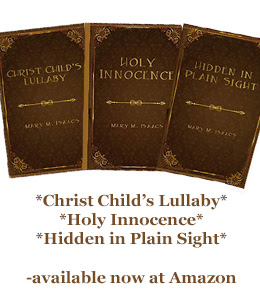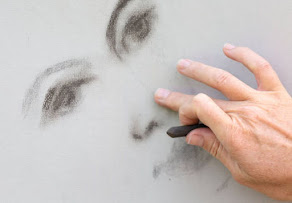God worked in such amazing ways, she told herself for the umpteenth time. Looking at the building across the street, she read the familiar words: “Planned Parenthood”. She had driven down this street innumerable times, as it was on the route between her home and where she worked. She could never pass by the clinic without feeling a touch of evil; she also felt sadness when she saw women going in or coming out. She wished it wasn’t there; she wished that one day she would drive by and it would have mysteriously disappeared and have been replaced by a bakery or a shoe repair shop or a small office building. Even a weedy empty lot would be preferable.
There were better days, certainly, days when she saw people with pro-life signs standing outside the building. She knew they were there praying. With all her heart she wished she could stand there, too, with them—but even as the thought crossed her mind, fear clamped down and she felt a cold sweat starting. She wished she weren’t so afraid, she wished she had more personal courage, but she knew herself too well. It had always been like that for her. She prayed for God to take away her negative reactions, to give her courage so she could participate, but the fears remained. Until that day, a few weeks ago…
-------------------------
It was pure coincidence (right!) which led her to read that week’s online message from city hall. Amongst boring notices about committee meetings, the predictable police log, and the regular civic cheerleading post from the mayor, was an interesting announcement—about street artists wanted. The city council had voted to try an experiment to encourage weekend foot traffic downtown. It was announced that any local artist could apply for a vendor’s permit by submitting examples of their work; if accepted, they could set up to display and sell their work downtown on weekends, in locations to be chosen in order of application.
She had read and reread the announcement. She was not a professional artist, not even a prolific one! But she had taken a couple of introductory sketching classes at the community college. Her classmates—and more importantly, the instructor—had liked her work, simple as it was. She hoped the city council would agree, because she had JUST the right site picked out: across the street from Planned Parenthood! She would then have a perfectly good reason for being there. She could sit and sketch—and no one would ever guess the real reason she was there.
The portfolio she eventually submitted to the city council committee was pretty thin, but she had included her best work. While she waited, she bought a better easel, invested in new charcoals and pastels, and searched online for a portable display screen. When the acceptance information was emailed to her, she was jubilant. She emailed her thanks and her desired location; she received an immediate okay. Everything was working out as she had planned--and as God had directed.
For several weeks, she spent most of her Saturdays sketching across the street from the clinic. A couple of people stopped to look at her artwork, but no one bought anything. That didn’t matter, because her most important task was being accomplished: prayer. She angled her chair so she could watch the entrance to the clinic while she was sketching. Women—and some men—walked in and out most of the day. Some were inside for a long time….. She prayed for them all, and for the unborn children who soon would be no more.
----------------------
One Saturday, while she was sketching from a photograph, she noticed a young woman come around the corner across the street. The woman walked slowly up to the clinic door and stood there; she seemed to be reading the hours sign. She then walked back and forth in front of the building several times, occasionally stopping at the door, and finally sat down on the edge of one of the sidewalk planters that dotted the street on both sides. She clasped her hands in front of her and looked down.
After watching the woman’s movements closely, the artist prayed, Lord, please stop her from entering. She then made herself as obvious as possible, by rising and rearranging the display of her sketches on the screens, adjusting the position of her easel, and repositioning her chair. Out of the corner of her eye she saw that the young woman across the street had noticed and was watching her. The artist then sat back down and started setting up her chalks, while continuing to pray: Send her over here, Lord—take her away from that place.
The young woman stood up, crossed the street, and took her time looking at the pictures on the portable screen. “These are nice,” she said finally. “I really like the flower pictures, all the pretty colors. I wish I could draw.”
“Thank you,” said the artist with a smile, as she continued to pray silently. All of a sudden, she stopped abruptly, as if listening to something. Then she looked at the young woman and said, “I…I hope you don’t mind my asking, but may I sketch you? It won’t take long and it’s good practice for me. You have an interesting face.” At that, the young woman blushed a bit and started to shake her head. “Oh, you can have the sketch afterwards! Or we’ll throw it away if you don’t like it. No one will ever see it but you and me. It’s just for practice…” she pleaded.
The young woman thought for a moment and then agreed shyly; she sat down on the edge of the sidewalk planter. “Does my hair look okay?” she asked as she poked at it. “How should I sit? What do you want me to do?”
“You don’t have to do anything particular,” the artist replied. “Just relax and smile.”
The artist began right away with black charcoal; a little later she started to add in colors here and there. She worked quickly, the image blossoming on the paper as if it were being transmitted rapidly through her fingers--as indeed it was, she realized later.
After a short while, the artist put down her charcoal and chalks and said, “Done!” She unfastened the paper from the easel and handed it to the young woman, who took it eagerly, with an air of mixed anticipation and skepticism—until she saw the picture for the first time.
The young woman took a quick breath and turned pale, then sat as if turned to stone. She looked up at the artist quickly, and then back down at the picture. A range of emotions passed over her face—enough to have kept the artist busy for days, if sketching had been on her mind. Instead, she focused entirely on her internal prayers. There was a long silence.
“We can throw the picture away if you don’t like it,” the artist repeated.
The young woman frowned slightly and started to hand the paper back, but then brought it closer, with her eyes fixed on it. “How did you know?” she whispered, looking up again. The artist gestured across the street with her hand but said nothing. There was more silence while the young woman looked back down at the picture, hands slightly trembling.
Finally, the artist spoke quietly. “I wasn’t being entirely truthful when I said you had an interesting face. You can see that you have a beautiful face. Your baby’s face will be beautiful, too—that part was easy to draw.” She tipped her head sideways and looked at the young woman. “So, shall we throw it away?”
The young woman said nothing for a long time. Then she stood up slowly, holding the sketch. “No,” she said, with the beginning of a smile. “I’m not going to throw it away. Thank you.” Then she turned and walked to the corner and crossed the street—away from the artist and away from the clinic. Maybe also away from her doubts? The artist hoped so, fervently.
There was complete silence afterwards. No cars drove past, no people walked along either street. The artist sat back in her chair and dusted her hands off. In her mind she could still see the simple sketch she had done of the mother and the child; she knew it was one of the best pictures she had ever drawn. For a few seconds she was sorry it was gone, that she would never see it again—but then she closed her eyes and gave humble thanks. She was certain that God wouldn’t take that image away forever. No sketch would be needed after she saw the young woman again because she wouldn’t be alone—the artist would see both mother and child. She was certain of that.
Her sketch of the young woman and the baby had been beautiful. She knew that the reality would be even more so.









No comments:
Post a Comment